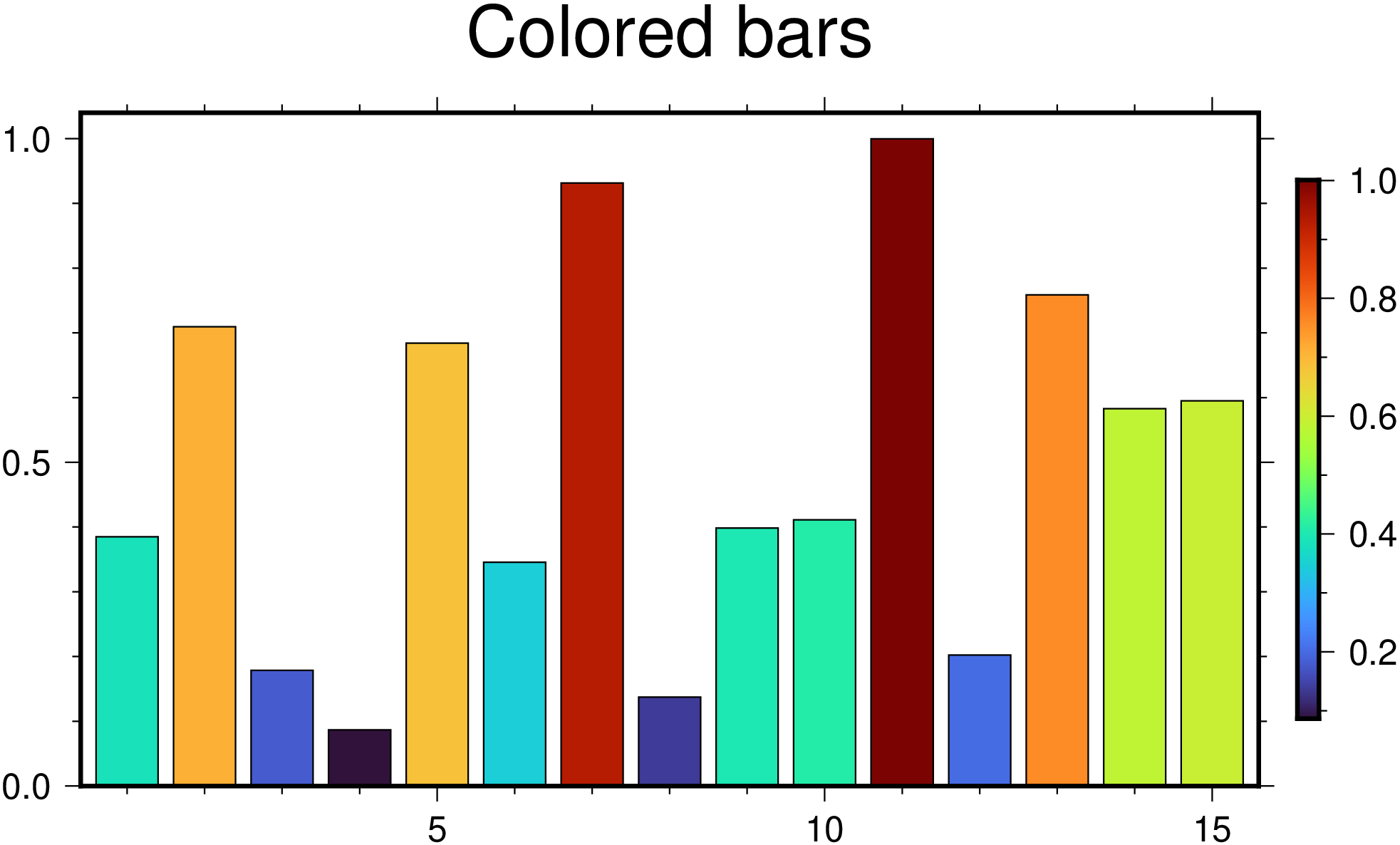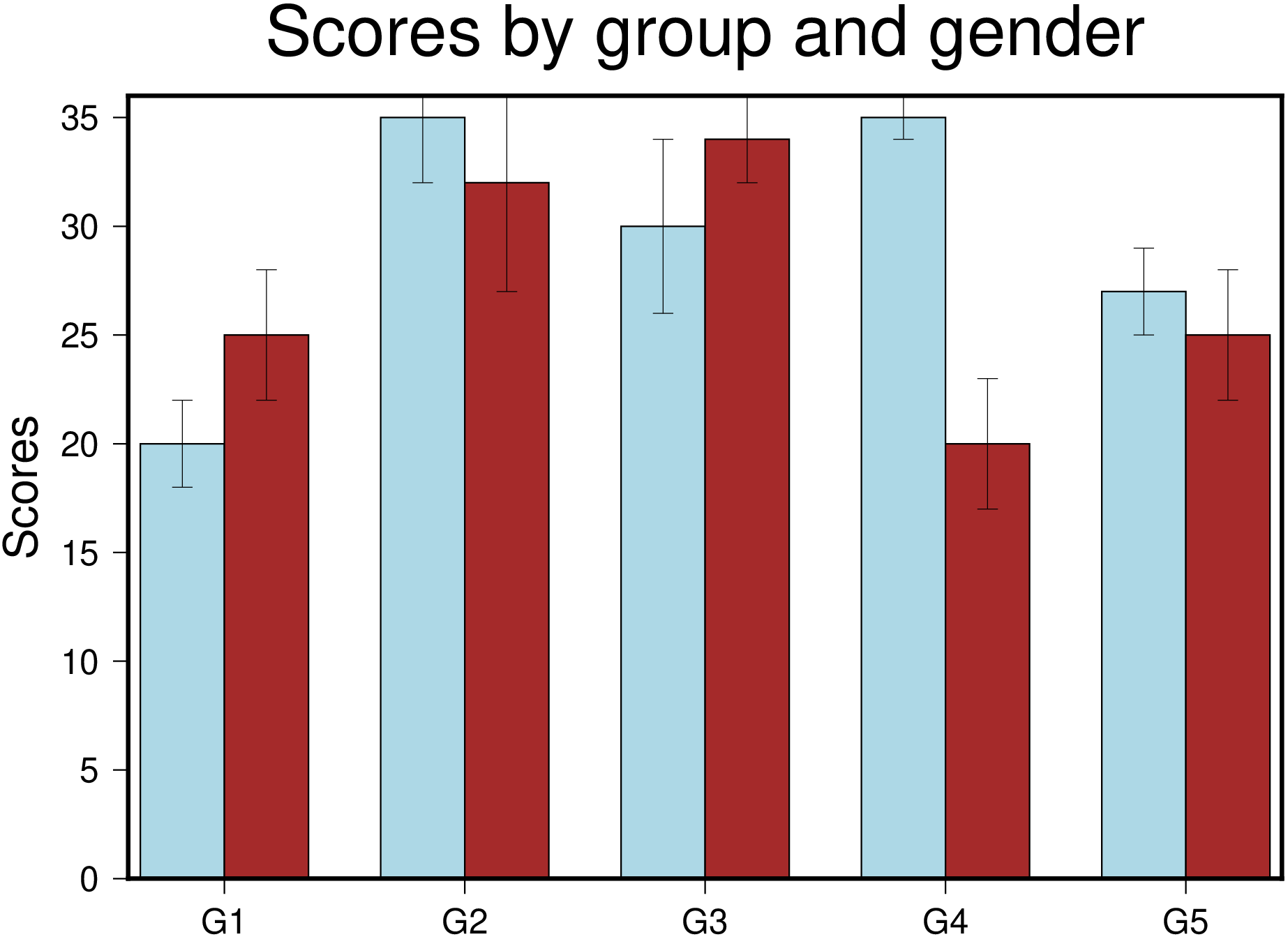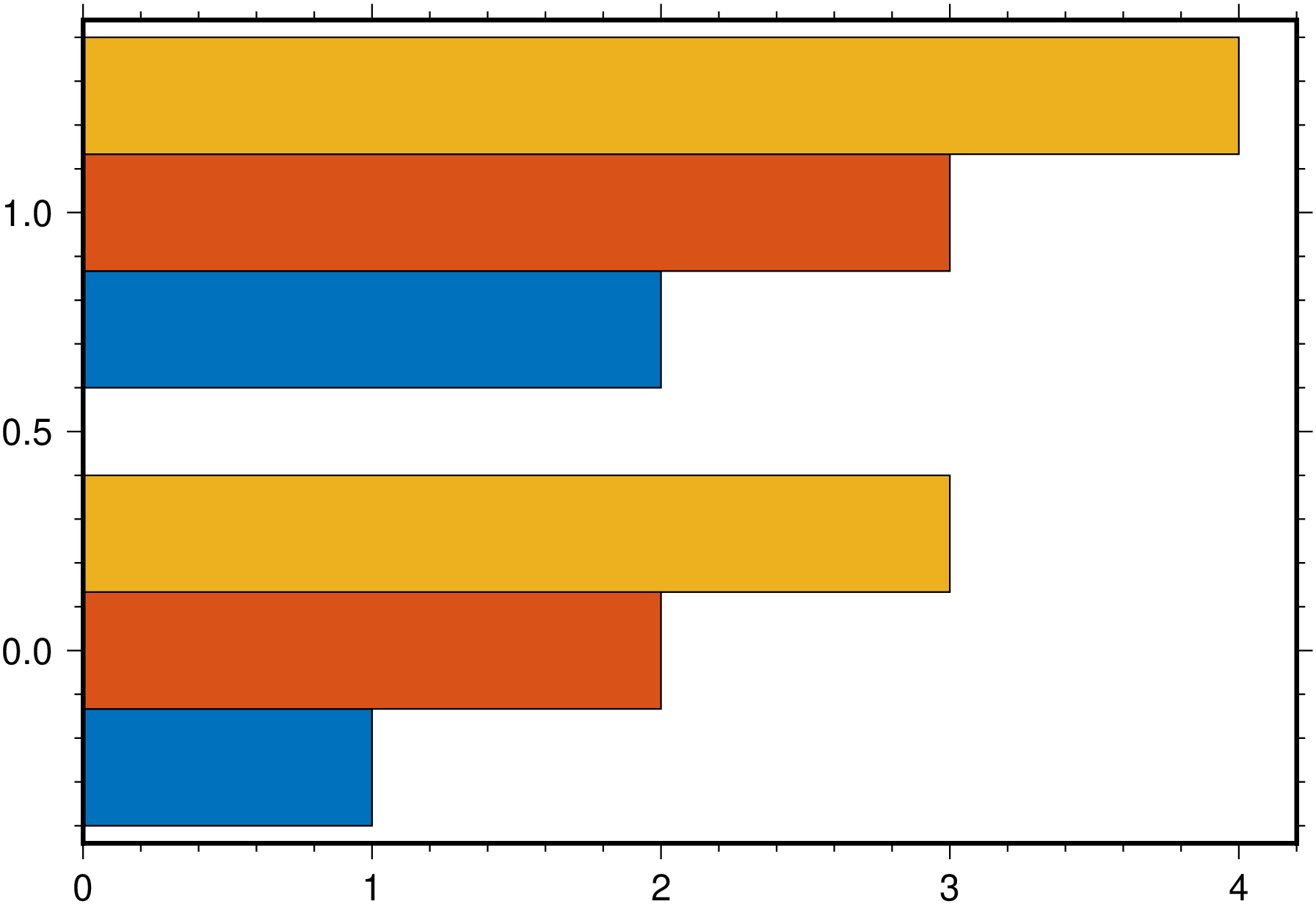Bar plots
A simple bar plot showing color and bar width (in data units) assignement.
bar(1:5, (20, 35, 30, 35, 27), width=0.5, color=:lightblue, limits=(0.5,5.5,0,40), show=true)
A colored bar plot with colors proportional to bar heights. In this case we let the plot limits be determined from data. We also plot a colorbar by using the colorbar=true option.
bar(rand(15), color=:turbo, figsize=(14,8), title="Colored bars", colorbar=true, show=true)
Example showing how to plot bar groups and at same time assign variable transparency to each of the group's band usinf the fillalpha option. Here, each row on the input data represents a bar group that has as many bands as n_columns - 1. -1 because first column must hold the xx coordinates of each group. The colors come from the automatic cyclic scheme.
bar([0. 1 2 3; 1 2 3 4], fillalpha=[0.3 0.5 0.7], show=true)
Next example shows how to plot error bars in a grouped bar. Similar to this mapplotlib's example (labels will come later).
bar(1:5, [20 25; 35 32; 30 34; 35 20; 27 25], width=0.7, fill=["lightblue", "brown"],
error_bars=(y=[2 3; 3 5; 4 2; 1 3; 2 3],), xticks=(:G1, :G2, :G3, :G4, :G5), yaxis=(annot=5,label=:Scores), frame=(title="Scores by group and gender", axes=:WSrt), show=true)
Example of a verticaly stacked bar plot. In this exampled we pass the xx coordinates as first argument and the individual bar heights in a matrix with smae number of rows as the number of elements in the x vector. To make it plot a stracked bar we used the option stacked=true.
bar(1:3,[-5 -15 20; 17 10 21; 10 5 15], stacked=1, show=1)
To create an horizontal bar plot we use the hbar=true option"
bar([0. 1 2 3; 1 2 3 4], hbar=true, show=true)
And one horizontal and stacked but this time we pick the colors.
bar([0. 1 2 3; 1 2 3 4], stack=true, hbar=true, fill=["red", "green", "blue"], show=true)
Download a Pluto Notebook here